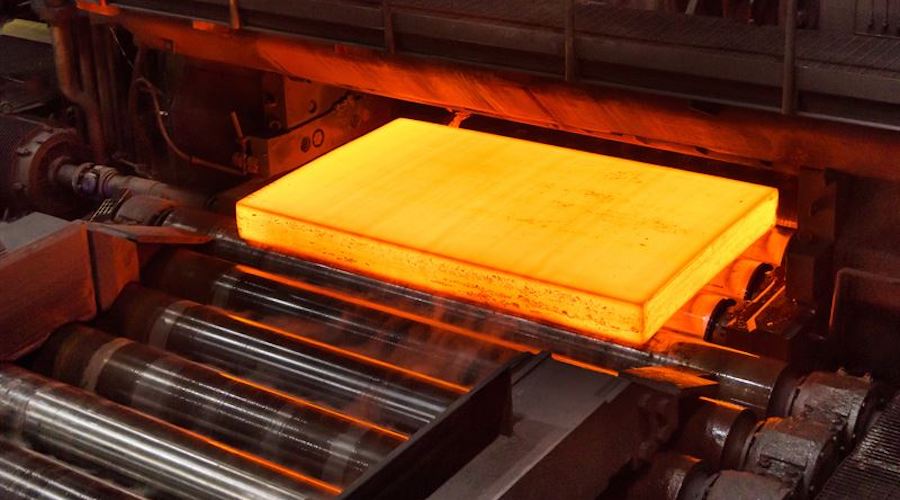Reuters | March 27, 2024 |

Steelmaking. (Reference image by SSAB).
Decarbonizing steel production is key to achieving global net-zero emission targets and the good news is that it can be achieved, and the cost isn’t prohibitive for some uses.

The bad news is decarbonizing steel isn’t likely to happen without regulation, coupled with price incentives that drive a shift in investment and consumption.
Steel production accounts for about 8% of global carbon emissions and about 30% of emissions from industry, and the sector is the major consumer of metallurgical coal, which is a key source of heat and carbon needed to turn iron ore into steel.
The determining factors in any discussion about switching to producing green steel is how much more will it cost than the current, well-established methods, and whether it can be scaled up fast enough.
The cost premium shows how it can work, and equally why it likely won’t.
The good news is that the premium is not as big as many would fear, depending upon how and where you produce the green steel.
The premium may be almost nothing or up to about $150 a metric ton, according to the consensus of presentations at last week’s Global Iron Ore and Steel Forecast Conference, held in Perth in Western Australia, the state that produces the bulk of the world’s exported iron ore.
To put that in perspective, hot-rolled coil futures in Shanghai ended at 3,782 yuan a ton on Tuesday, equivalent to $524.24, while London-traded US steel ended at $803.
Figures from Monash University in Australia show that green steel could be made in Western Australia for about A$850 ($570) a ton using a mix of wind, solar, battery storage and hydrogen.
The bad news is that even a relatively modest premium likely makes green steel unviable for much of the market, where costs are a major factor.
China steel
Take China’s steel demand as an example.
China produces about half of the world’s steel and buys just over 70% of global seaborne iron volumes.
Its steel consumption in 2024 was 907.3 million tons, according to data from S&P Global Commodity Insights.
The only sector that may be prepared to pay a premium for green steel is automotive manufacturing.
This is because the volume of steel per car is probably around 1-1.5 tons, meaning that even assuming a premium of $150 a ton for green steel, the impact on the retail price of a vehicle is negligible.
It’s possible the marketing value of saying the car is produced with green steel may exceed the actual cost of using the environmentally friendly product.
However, China’s automotive sector used 54 million tons of steel in 2024, according to S&P Global, which is a mere 6% of total demand.
The biggest steel consumers are property and infrastructure, which used a combined 518 million tons in 2024, or 57% of the total.
A modern skyscraper building may use about 700 tons of steel per floor, meaning a 100-story building would use some 70,000 tons, which at a premium of $150 a ton would add about $10.5 million to the cost.
High-speed rail can use between 30,000 and 60,000 tons of steel per km, and even using the lower figure means going green adds $4.5 million per km.
Both of these numbers mean that green steel is likely unaffordable for these applications, especially in Asia, the world’s most populous continent and the biggest driver of steel demand currently and likely for the next 30 years.
Investment switch
The second major factor confronting green steel is how to switch from the current method of using a blast furnace to turn iron ore into pig iron using coal, and then using a basic oxygen furnace (BOF) to turn this into steel.
There are several different paths available, but the one most likely to succeed involves using green energy to upgrade iron ore into direct reduced iron (DRI), which can then be turned into steel using an electric arc furnace or by using a hydrogen or natural gas powered BOF.
However, DRI is too volatile to be shipped, meaning that if Australia was to upgrade its iron ore to DRI, it would have to be further beneficiated into hot briquetted iron (HBI), a solid form that can be shipped.
It’s possible that HBI could be shipped from Australia to steel mills in China, Japan and other producing countries in Asia, but these countries would have to have the green hydrogen or clean electricity available to produce the final steel products.
All of this requires extensive capital investment, and currently the money isn’t flowing in this direction given China and other countries across Asia are still building blast furnaces and BOFs designed to use coal.
This is why the only way to drive a switch to green steel is likely through regulation and price signals such as carbon border taxes.
But getting global agreement on a carbon pricing system for steel is likely to be fraught, as developing nations in Asia will almost certainly push back on having to pay more for their steel.
(The opinions expressed here are those of the author, Clyde Russell, a columnist for Reuters.)
(Editing by Jamie Freed)
No comments:
Post a Comment